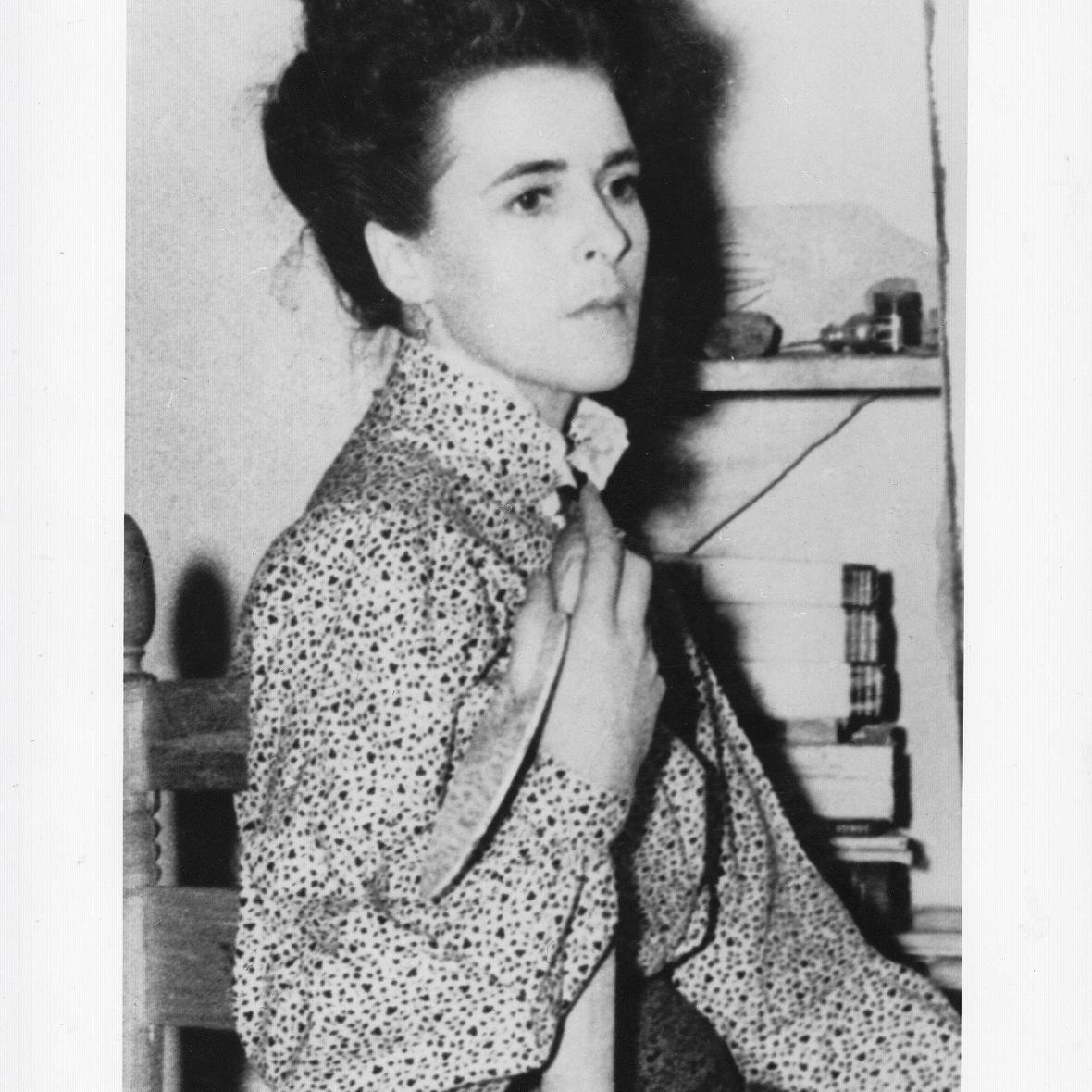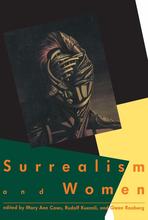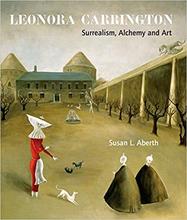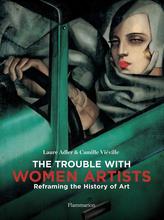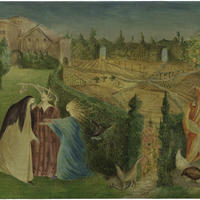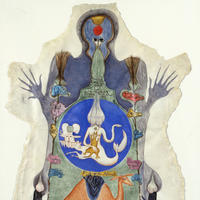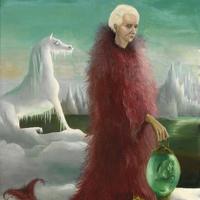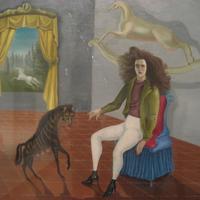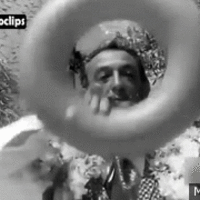More about Leonora Carrington
- All
- Info
- Shop
Works by Leonora Carrington
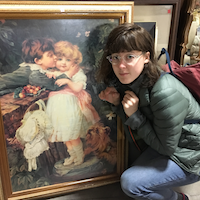
Contributor
Rebellious and imaginative with an animalistic intensity, Leonora Carrington is the crush you didn't know you had.
Morning omelets made with bits of hair snipped from the heads of her sleeping guests; entering a surrealist party wearing nothing but a white sheet before dropping it and standing in the middle of the room completely naked; sitting at a restaurant table while covering her bare feet entirely in mustard. These could be the antics of a debaucherous Saturday night for some, but for Leonora, the self-proclaimed "female-human-animal," it was just business as usual (much to the dismay of her frequent dinner guests). Never a fan of normality, she seems to have awoken each morning with a renewed passion to outdo the previous day's bizarre antics—a description that held true for most of those extravagant Surrealists. Just go read Salvador Dalí or Max Ernst’s page to see for yourself.
A painter, sculptor, author, amateur chef, aspiring alchemist, costume and set designer, Carrington had a resume that makes the rest of us feel woefully inadequate (and woefully boring). She fits into the category of “badass babes from art history that never got the respect they deserve," and I’d honestly opt to establish a new style dedicated entirely to her work: Surrealism meets Hieronymus Bosch with a feminist twist. Anyway, we give her mad props because she was a strong woman working in a tradition that favored men and only thought of women as muses or objects of desire. She held it down for all the ladies and said goodbye to that misogynistic norm by taking all the acid-trip imagery of Surrealism and replacing the female objectification with her own supernatural flair ranging from animals to magic to transformation to androgyny. Known for being prickly and uncompromising, she never conformed to any standards and wholly refused to be anyone's muse.
Rebellious from diaper days, Carrington's parents had a hard time keeping her on the straight and narrow. After multiple expulsions from Catholic school and a dispassionate debutante ball, they finally agreed to let her study art in London where a chance encounter at a dinner party sparked a saucy affair with the much older Max Ernst. Before long she was grabbing her golf clubs and running away to Paris with Ernst to be a cool bohemian and escape her stuffy high-class upbringing.
When Ernst was imprisoned at the height of WWII, a forlorn Leonora had a mental breakdown, or maybe someone mistook her eccentricities for poor mental health. Either way, she was was brought to an institution in Madrid to endure the worst months of her life. Psychiatry at this time was veeeeery sketchy, and she was essentially forced to undergo treatment similar to electric shock therapy. When she finally escaped, André Breton urged her to write about the experience, describing her as an ambassador "from the other side." She decides that this is good advice and ends up chronicling the horrendous experience in her harrowing memoir, Down Below, which The Guardian now ranks among the top 1,000 books everyone should read.
Leonora fled Spain for Mexico City in 1943 where she would live as a beloved ex-pat for the rest of her life. It was here that she found a friend and ally in fellow artist Remedios Varo and a circle of female Surrealists (re: badass women attracting other badass women). Remedios and Leonora achieved celebrity status and became super besties, finding in each other a companionship that they never found in men. They did self-exploration exercises together, wrote plays, collaborated artistically, and threw infamously extravagant dinner parties. Leonora's work gained critical acclaim in Mexico, where she came to be considered one of the more famous artists in the country and a "national treasure." She was awarded one of Mexico's most esteemed prizes, The National Prize for Arts and Sciences. Never one to waver in her beliefs, she went on to pioneer the Mexican Feminist Liberation movement in the 70s. All in a day's work.
Carrington made history when one of her paintings, Juggler, sold in a 2005 auction for $713,000—the highest price ever paid for work by a living Surrealist artist.
Besides the only recent exhibitions of her massive oeuvre (1,500-2,000 artworks!), pop culture continues to honor the queen by paying homage to her somber imagery. Madonna's tribute was her Bedtime Story music video, while Tilda Swinton helped recreate her paintings for an editorial in W Magazine. We're not surprised by the hype, really. Her work creeps into your brain like a nightmare you don't want to forget
Sources
- Blumberg, Naomi. "Leonora Carrington." Encyclopædia Britannica. March 23, 2017. Accessed June 12, 2017. https://www.britannica.com/biography/Leonora-Carrington.
- Carington, Leonora. Complete Stories of Leonora Carrington. S.l.: Small Press Distribution, 2017. Introduction.
- Dahl, Nel. "The Forgotten Surrealist Painter Who 'Didn't Have Time to Be Anyone's Muse'" Broadly. April 12, 2017. Accessed May 28, 2017.
- Grimes, William. "Leonora Carrington Is Dead at 94; Artist and Author of Surrealist Work." The New York Times. May 26, 2011. Accessed June 08, 2017. http://www.nytimes.com/2011/05/27/arts/design/leonora-carrington-surrea….
- Leonora Carrington: Britain's lost surrealist | TateShots. Accessed June 08, 2017. http://www.tate.org.uk/context-comment/video/leonora-carrington-britain….
- "Leonora Carrington." Gallery Wendi Norris. June 03, 2017. Accessed June 12, 2017. https://www.gallerywendinorris.com/carrington/.
- Levy, Silvano. "Leonora Carrington: Surrealist painter and sculptor who found her artistic and spiritual home in Mexico." The Independent. May 27, 2011. Accessed June 08, 2017. http://www.independent.co.uk/news/obituaries/leonora-carrington-surreal…
- "Magic and Mystery, Fantasy and Fashion: Leonora Carrington in Pop Culture." The Art Story Blog. February 26, 2015. Accessed June 12, 2017. http://www.theartstory.org/blog/magic-and-mystery-fantasy-and-fashion-l….
- Rye, Jane. "Leonora Carrington's adventures in surrealism." The Spectator. April 11, 2017. Accessed May 28, 2017. https://www.spectator.co.uk/2017/04/leonora-carringtons-adventures-in-s….
Featured Content
Here is what Wikipedia says about Leonora Carrington
Mary Leonora Carrington OBE (6 April 1917 – 25 May 2011) was a British-born surrealist painter and novelist. She lived most of her adult life in Mexico City and was one of the last surviving participants in the surrealist movement of the 1930s. Carrington was also a founding member of the women's liberation movement in Mexico during the 1970s.
Check out the full Wikipedia article about Leonora Carrington

